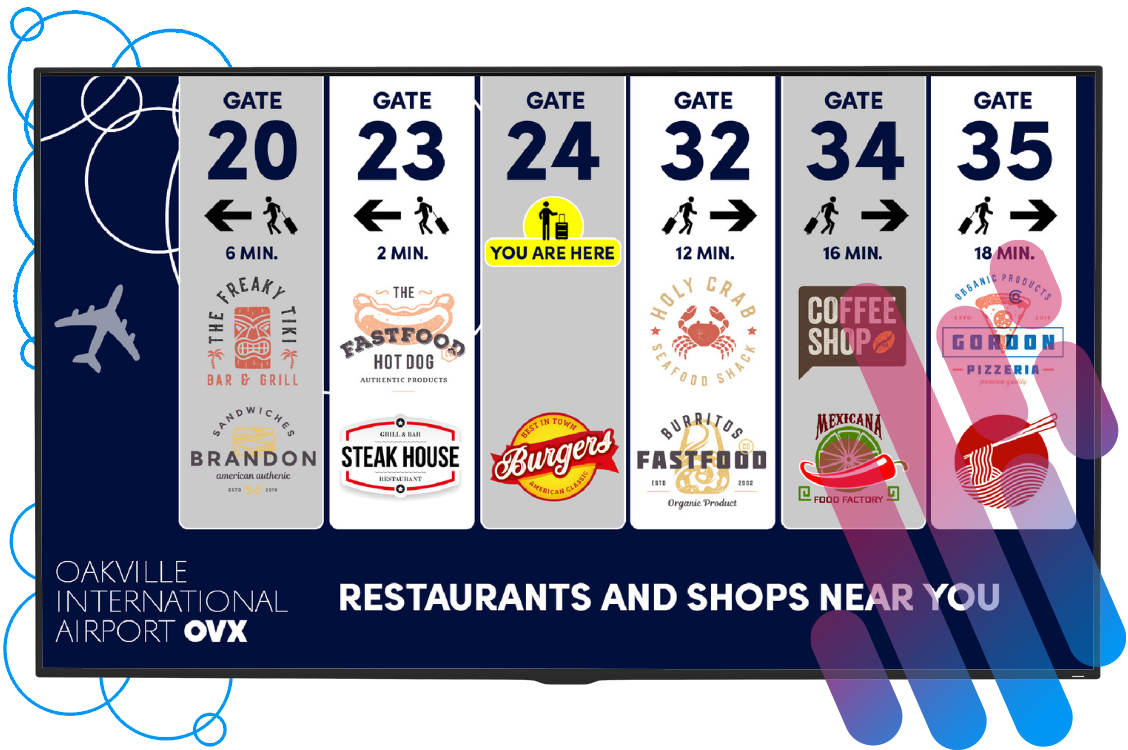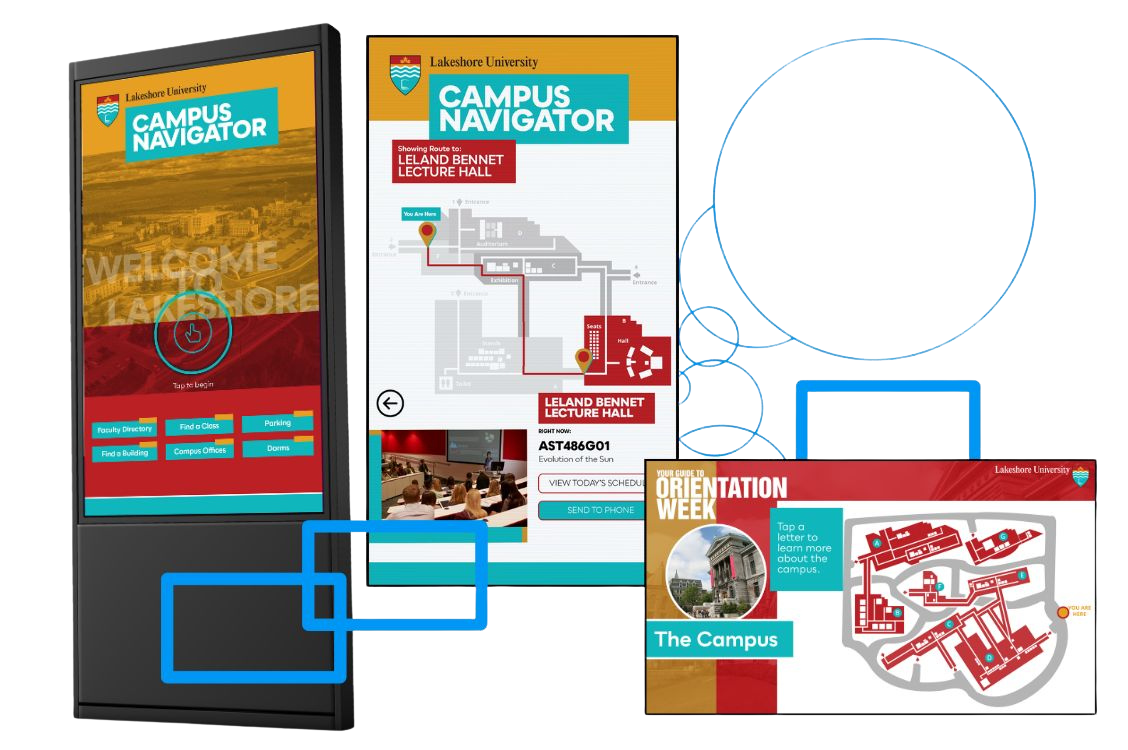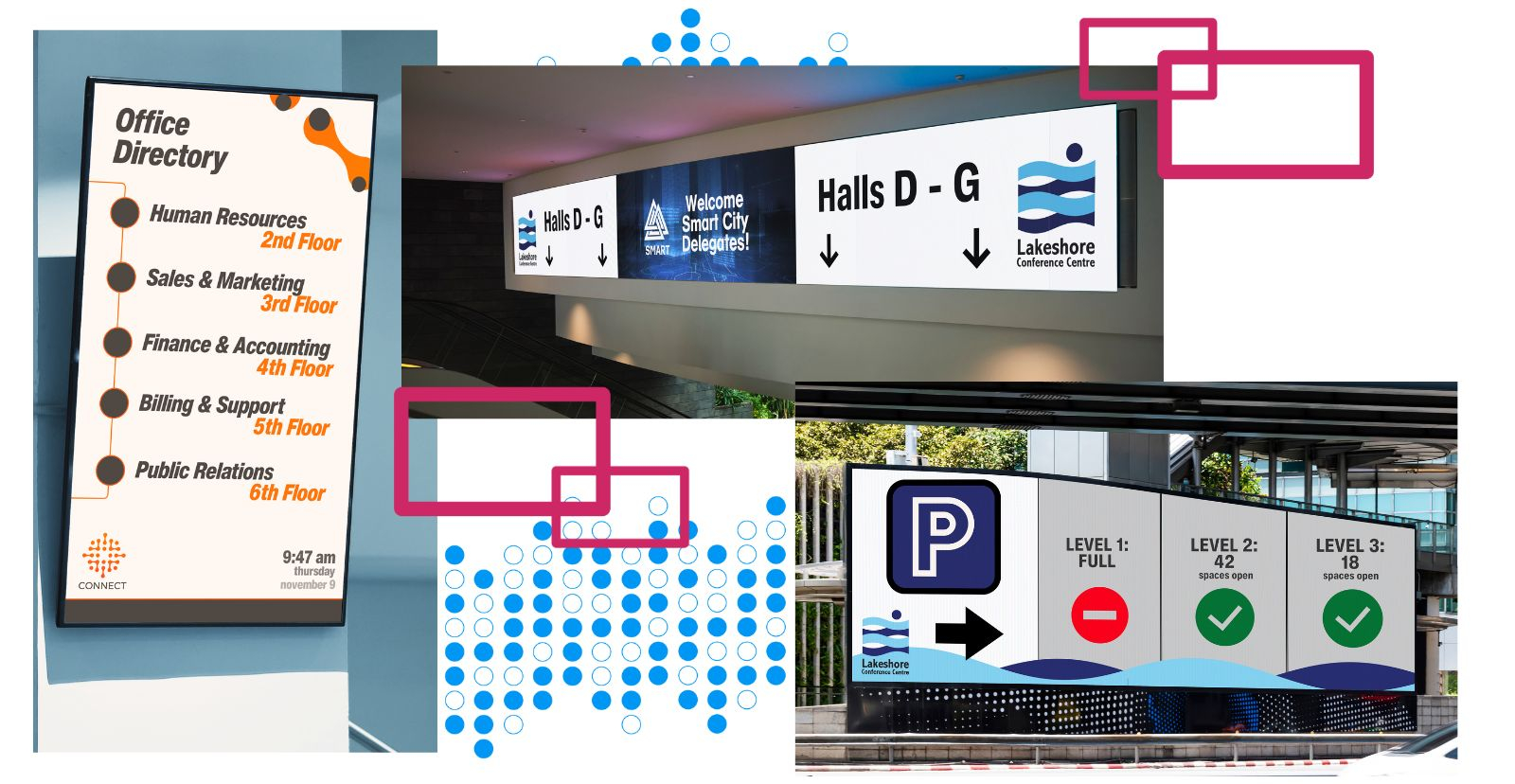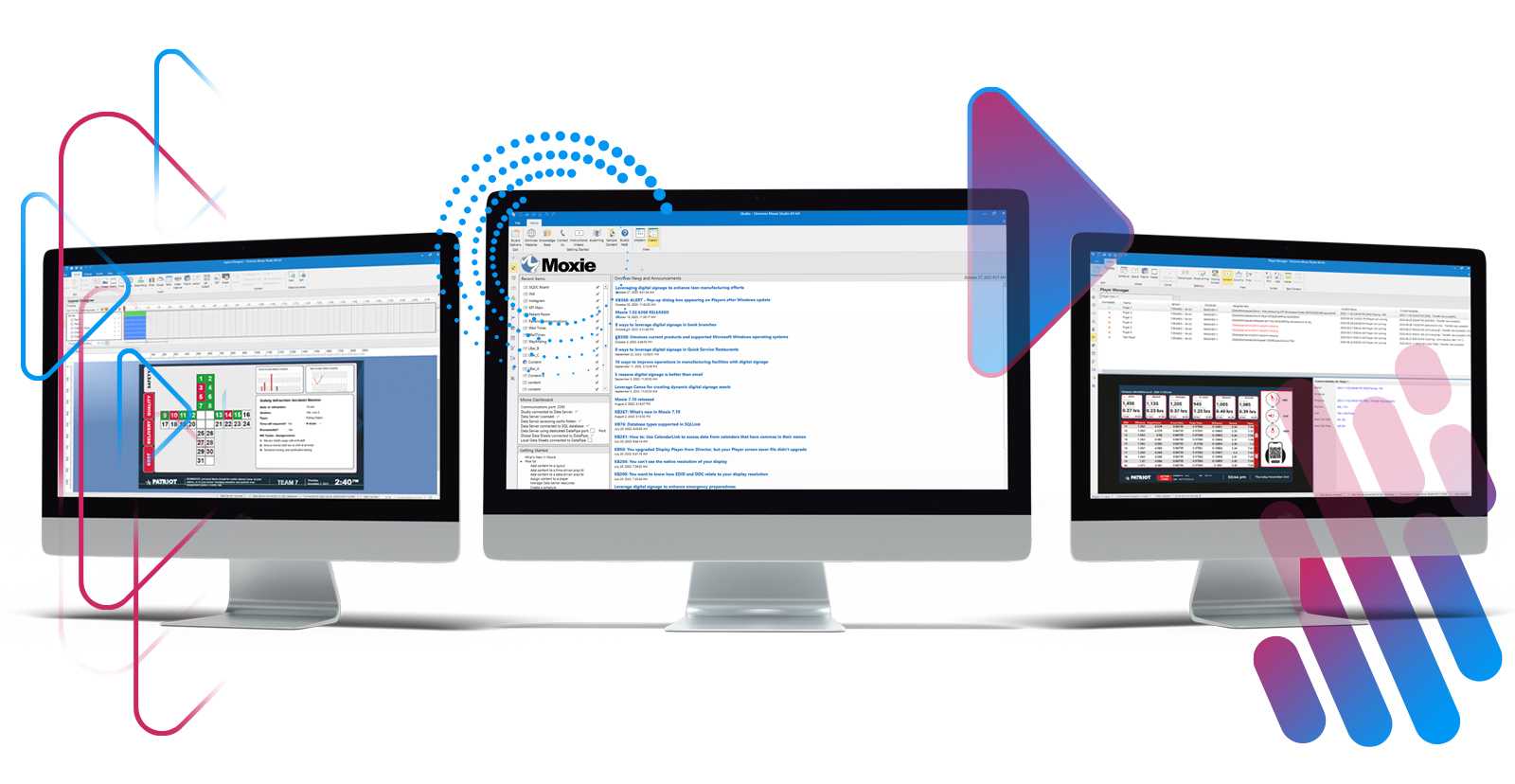Help visitors find their way with digital wayfinding.
Leveraging digital signage for wayfinding is a versatile and efficient approach to helping people navigate complex spaces. The Omnivex platform allows you to share real-time wayfinding information on any screen, from mobile phones to digital signs. Whether it's a sprawling hospital, a bustling airport, a large university campus, or a multi-story shopping mall, digital signage can provide clear and dynamic guidance.
How can you use digital signage for wayfinding?

Directional Arrows
Integrate directional arrows onto any digital signage screen to guide users to key areas or points of interest within your facilities. Easily update arrows as information changes.

Interactive Maps
Utilize touchscreens to offer interactive maps that allow users to zoom in, pan, and search for specific locations. Enable visitors to visually understand their surroundings and identify their destination.

Floor Plans
Digital signage can present floor plans with highlighted routes to help users find their way within a multi-story building. This is particularly useful in hospitals, shopping centers, and universities.

Travel Time
Provide an estimated travel time to reach a destination, department, or area. Highlight important facilities along the route, including washrooms, restaurants, security, and more.

Multilingual
For international or diverse audiences, digital wayfinding signage can be programmed to offer information in multiple languages, ensuring everyone can access guidance in a language they understand.

Mobile Integration
Integrate a QR code onto the screen or interactive wayfinding kiosk to make directions and maps portable to mobile phones.

Real-time Information
Real-time information is vital when using digital signage for wayfinding to ensure users receive up-to-the-minute guidance. Information can change rapidly in complex and dynamic environments, such as airports, hospitals, or large campuses. Real-time updates allow digital signage to adapt instantly, providing accurate directions, alerts, or notifications. This timeliness is particularly critical during emergency situations. In the event of a fire, natural disaster, or security breach, real-time digital signage can guide users to the nearest exits or safe zones, potentially saving lives.


